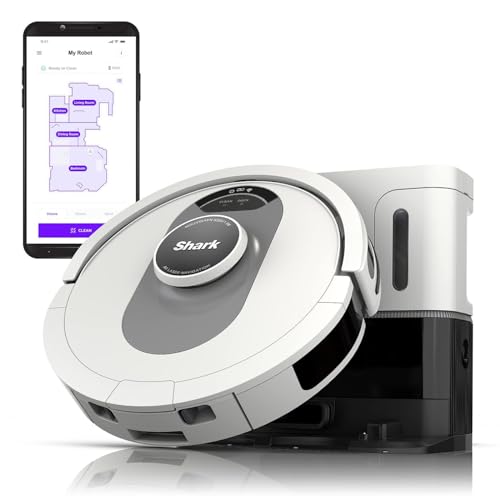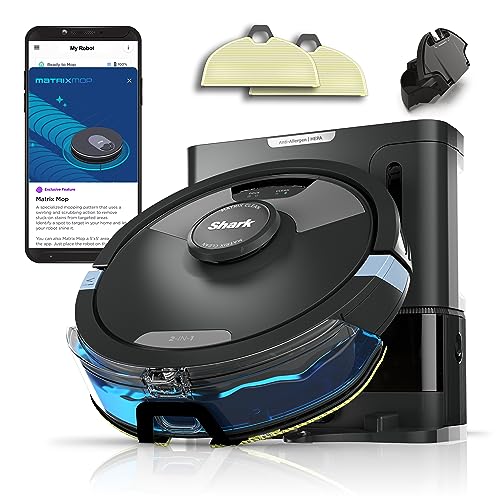What's The Job Market For Bagless Robot Navigator Professionals?
페이지 정보

본문
 The Bagless Robot Navigator - A bagless wifi-connected robot Robot Vacuum That Can Navigate Your Home Without an External Base
The Bagless Robot Navigator - A bagless wifi-connected robot Robot Vacuum That Can Navigate Your Home Without an External BaseFor a robot bagless self-recharging vacuum that costs this much it's amazing how much this tiny robot packs into its compact, affordable design.
In contrast to other bump bots that make use of rudimentary random path navigation, this one actually generates a coverage map of your home and avoids obstacles like cords for lamps.
After a thorough cleaning, the robot will empty itself into its dock that is bagless robot vacuum mop. The robot will then recharge, and continue the same way it left off until its battery is exhausted.
Room-by-Room navigation
If you want a robotic bagless modern vacuum cleaner that is able to navigate through your home without requiring an external base, then you will likely be interested in solutions that allow rooms-by-room mapping. This kind of technology enables the robot to view and create a map of your entire house, which enables it navigate around more thoroughly. This can help to ensure that every room is cleaned and that areas like stairs and corners are covered correctly.
Usually, this is accomplished through SLAM (Simultaneous Localization and Mapping) technology, although some robots employ different methods. Some of the newest robots available like those from Dreame use Lidar navigation. This is a much more advanced version of SLAM that makes use of multiple lasers to scan the environment, and measure reflected beams of light to determine where it is relative to obstacles. This can enhance performance.
Other navigational technologies include wall sensors, which can prevent the robot from pinging against walls and large furniture and causing damage to your floor as well as to the robot itself. A lot of these double as edge sensors, assisting the robot navigate through walls and stay away from furniture edges. These are very beneficial, especially if reside in a house that has multiple levels.
Some robots could include a built-in camera which can be used to create an precise map of your home. It is often used in conjunction with SLAM but you can also find models that only use cameras. This can be an affordable option for some, but it has its own drawbacks.
 The random navigation robot faces one issue: it is unable to remember which rooms it's already cleaned. If you're trying to clean large areas of your home, this can mean that your robot may end up cleaning the same room twice. It's also possible that it'll overlook rooms completely.
The random navigation robot faces one issue: it is unable to remember which rooms it's already cleaned. If you're trying to clean large areas of your home, this can mean that your robot may end up cleaning the same room twice. It's also possible that it'll overlook rooms completely.With room-by-room navigation, the robot is able to keep track of rooms it has already cleaned, which reduces the time required to complete each pass. The robot can be directed to return to its base when its battery is running low. An application will show you the location of where your robot was.
Self-Empty Base
Self-emptying bases do not have to be emptied every time they are utilized unlike robot vacuums, which need to empty their dustbins after every use. They need to be emptied when they are at their maximum capacity. They also have a lower noise level than the dustbins of robot vacuums. This makes them perfect for people with allergies or other sensitivities.
Generally, a self-emptying base has two water tanks for clean and dirty water, as well as a space for the brand's floor-cleaning solution, which is automatically mixed with water and dispensed when the robot mop is docked in the base. The base is also where the mopping pads are kept when they are not in use.
Many models that come with a self-emptying platform also feature a pause/resume feature. You can shut down the robot and return to the dock or Self-Empty Base for charging before beginning the next cleaning session. Many also have a camera that you can use to create no-go zones, watch live footage of your home, and adjust settings like bagless suction vacuums power and the amount of water dispensed when mopping.
If the light on your dock or Self-Empty base appears to be solid red The battery power of your robot is at a low level. It must be recharged. It can take between two and seven hour. You can manually send your robot back to dock using the app, or by pressing the Dock button on your robot.
It is important to check your base for any obstructions or other issues that might hinder its ability to transfer dry debris from the dust bin onboard to the base. It is also important to ensure that the water tank is topped off and that the filter is rinsed regularly. It's also a good idea to regularly remove your robot's brushroll, and also clear any hair wraps that could be blocking the debris pathway in the base. These steps will help to keep your robot's Self-Empty Base and ensure that it is running at a high level. If you encounter any difficulties you can always contact the manufacturer for support. They will typically be capable of guiding you through troubleshooting procedures or supply replacement parts.
Precision LiDAR Navigation Technology
LiDAR is the abbreviation for light detection range and is a crucial technology that enables remote sensing applications. It is used extensively in the field of forest management to produce detailed maps of terrain, in environmental monitoring during natural disasters to assess the needs for infrastructure development, and in assisting autonomous vehicles (AGVs) in navigation.
The precision of LiDAR is dependent on the granularity at which laser pulses are measured. The greater the resolution, more detail a point cloud could have. The system calibration affects the stability of clouds. This involves evaluating stability within the same swath or flight line, and between the swaths.
In addition to allowing for more detailed topographic maps, LiDAR could also penetrate dense vegetation and create 3D models of the terrain underneath it. This is a significant advantage over conventional methods that depend on visible light, particularly during fog and rain. This ability can reduce the amount of time and resources required to study forest terrains.
With the advent of new technologies, LiDAR systems have been upgraded with new features to offer unparalleled precision and performance. One example is the dual GNSS/INS integration. This enables real-time point cloud processing, with high density and incredible accuracy. It also eliminates the need for manual boresighting which makes it easier and cost-effective to use.
Robotic LiDAR sensors, unlike mechanical LiDARs that utilize spinning mirrors to direct laser beams that transmit and measure laser light by using an electronic signal. The sensor records each laser pulse, which allows it to measure distances with greater precision. Furthermore, digital signals are less prone to interference from environmental factors like electromagnetic noise and vibrations, resulting in more stable data.
LiDAR is also able to detect surface reflectivity and differentiate between different materials. It can determine whether the branch of a tree is standing straight or lying flat by the strength its first return. The first return is usually associated with the highest point in an area, like an edifice or a treetop. The last return could represent the ground if it's the only one to be detected.
Smart Track Cleaning
One of the most fascinating features of the X10 is that it can detect and follow your movements while cleaning. The robot will follow you and utilize its mop or vacuum pad to clean along the route you take. This feature will help you save time and energy.
It also uses a new kind of navigation system that combines LiDAR with traditional random or bounce navigation to find its way around your home. This allows it to recognize and navigate obstacles more efficiently than a standard random bot. Its sensors have a wider field of view and are able to detect more clutter.
This makes the X10 more efficient in navigating around obstacles than the average robot, and its ability to recognize objects like charger cords, shoes and fake dog turds is amazing. The X10’s smart object recognition system allows it to keep these objects in mind so that next time it sees it, it won’t ignore them.
The X10 sensor's view has also been enhanced so that the sensor is able to detect more clutter. This helps the X10 become more efficient in maneuvering through obstacles and picking up dust and debris from floors.
Additionally, the X10's mop pads have been upgraded to be more effective at picking up dirt from both tile and carpet. The pads are a bit thicker and have a stronger glue than average pads. This helps them adhere better to flooring made of hard surfaces.
Another excellent aspect of the X10 is that it is able to automatically adjust its cleaning pressure to match the flooring material. This way, it can apply more pressure to tile, and less pressure to hardwood floors. It will also know the time it's necessary to remop, based upon the level of dirt in its water reservoir.
The X10 utilizes the latest VSLAM technology (virtual space light mapping) to create an architectural plan of your room while it cleans. The map can be viewed and managed in the SharkClean App.
- 이전글시알리스 5mg 부작용 시알리스 100mg 부작용 시알리스 20mg 부작용 비아그라 시알리스 부작용 시알리스 과다복용 24.09.03
- 다음글25 Surprising Facts About Multi Fuel Stoves For Sale 24.09.03
댓글목록
등록된 댓글이 없습니다.

